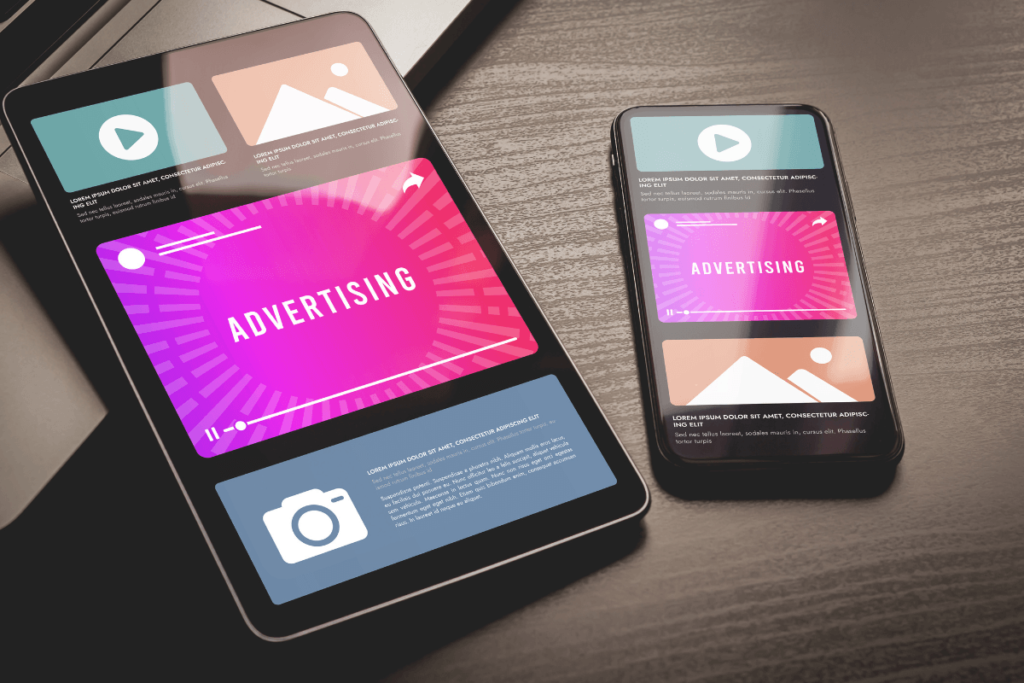When it comes to Google Ads, advertisers are constantly looking for ways to connect with potential customers more effectively. One approach gaining significant traction, especially in Australia, is device targeting. This article will shed more light on device targeting in Google Ads, its importance, and how to update your device targeting settings. We will also explore the concept of cross-device targeting to help you maximise your advertising ROI. Let’s take a closer look:
What is Device Targeting?
The term “device targeting” refers to the practice of customising ad campaigns to reach users on specific devices such as desktops, laptops, mobile phones, or tablets.
Google Ads device targeting enables advertisers to fine-tune their ads based on various device-related factors like screen size, operating system, and even the model of the device. By leveraging these options, advertisers can serve tailored ads that are optimised for the users device, thus increasing the chances of engagement and conversion.
The Importance of Device Targeting in Australia
In Australia’s digitally-savvy society, the prominence of device targeting cannot be overstated. With a high internet penetration rate and a culture that is quick to adopt new technologies, understanding the nuances of device targeting becomes not just beneficial but essential for any successful advertising campaign. Here’s why this matters:
Higher Internet Penetration and Device Usage
Australia boasts one of the highest internet penetration rates in the world. According to various reports, over 80% of Australians use the internet daily, and a substantial proportion access it through multiple devices. Given this scenario, device targeting offers a chance to meet consumers where they are most active – on their screens.
Enhanced User Experience
Consumer expectations for a seamless online experience are high. An ad that looks perfect on a desktop might not have the same impact when viewed on a mobile phone with a much smaller screen.
Device targeting allows advertisers to customise the visual elements and content of their ads to match the capabilities and limitations of each device. For example, a Call-To-Action (CTA) button that’s easy to click on a desktop might need to be resized for easier tapping on a mobile screen.
Increased Conversion Rates
Google Ads analytics often reveal that consumer behaviour varies across devices. Some people might prefer to browse products on their mobile phones but switch to desktops for making the actual purchase. By targeting users with device-optimised ads, you can make each stage of the customer journey more comfortable and intuitive, which in turn boosts the likelihood of conversion.
Optimised Ad Spend
Device targeting allows you to make data-driven decisions. By using Google Ads analytics, you can see which devices are yielding the best ROI. For instance, if tablet users are converting at a rate that’s twice as high as desktop users, you can choose to allocate more of your budget to tablet-specific ads. This helps in getting more bang for your advertising buck.
Localised Advertising
Australians frequently use mobile devices for local searches like “cafes near me” or “best beaches in Sydney.” This behaviour creates an ideal situation for localised advertising. Through device targeting, you can serve hyper-local ads aimed at users within a particular geographic radius. This is incredibly beneficial for small and local businesses who want to attract customers in their vicinity. The use of localised keywords and content that resonates with Australian culture and trends can make these local ads even more effective.
Meet the On-the-Go Australian Consumer
Given Australia’s sprawling landscapes and urban areas, people are often on the move, and they take their devices with them. Device targeting allows you to capture the attention of commuters, travellers, or anyone else who is accessing the internet away from their home or office. It also enables advertisers to consider factors like connection speed and type of device used to ensure the delivery of the most suitable ads for on-the-go consumption.

How to Update Device Targeting in Google Ads
Updating your device targeting settings in Google Ads is an easy and straightforward process. Here’s how to do it:
- Log into Google Ads: Access your Google Ads account and navigate to the campaign you wish to edit.
- Click on Settings: In the sidebar menu, click on the “Settings” tab.
- Choose Devices: Scroll down to the “Devices” section. Here, you’ll see a list of device types your campaign is currently targeting.
- Edit Device Targeting: You can set bid adjustments for different devices, remove certain device types, or add new ones. Click on the pencil icon to edit.
- Review and Save: Once you’ve made the necessary changes, review the settings to ensure they align with your campaign goals. Click “Save” to apply the changes.
- Monitor Performance: Use Google Ads analytics to evaluate the performance of your device-targeted campaign. Make necessary adjustments based on data and insights.
What is Cross-Device Targeting?
Cross-device targeting takes the concept of device targeting to the next level by creating a unified, seamless user experience across multiple platforms. In today’s interconnected world, consumers often begin their journey on one device and complete it on another.
For example, an individual might explore holiday destinations on their smartphone during their commute but switch to a desktop to make the actual booking. Cross-device targeting leverages data and insights from Google Ads analytics to track this consumer behaviour, allowing advertisers to deliver coherent and contextual ads regardless of the device being used. This ensures that the advertising message stays consistent and relevant, enhancing user engagement and increasing the probability of conversion.
Beyond being able to deliver more relevant ads, cross-device targeting provides robust analytics, granting advertisers insights into cross-device conversion paths. This means you can track a user’s interactions starting from the first touchpoint, be it a smartphone or a tablet, through to the last click on a desktop before a purchase is made. Such detailed analytics can be invaluable for understanding your customer’s journey and for attributing conversions to the appropriate campaigns and devices.

Device Targeting in Google Ads: Your Next Steps
In Australia’s dynamic digital market, employing tactics like Google Ads device targeting and cross-device targeting can give you a distinct advantage. Don’t forget that device targeting is just one of the many types of Google Ads Audience Targeting available for your Google Ads campaign. There are also features like Interest-based targeting and Affinity Audiences to name a few. By understanding what device targeting is and how to update your settings in Google Ads, you can create more personalised, effective, and high-converting ad campaigns.
Not sure where to start? Reach out to our experts for a free Google Ads management consultation today!




